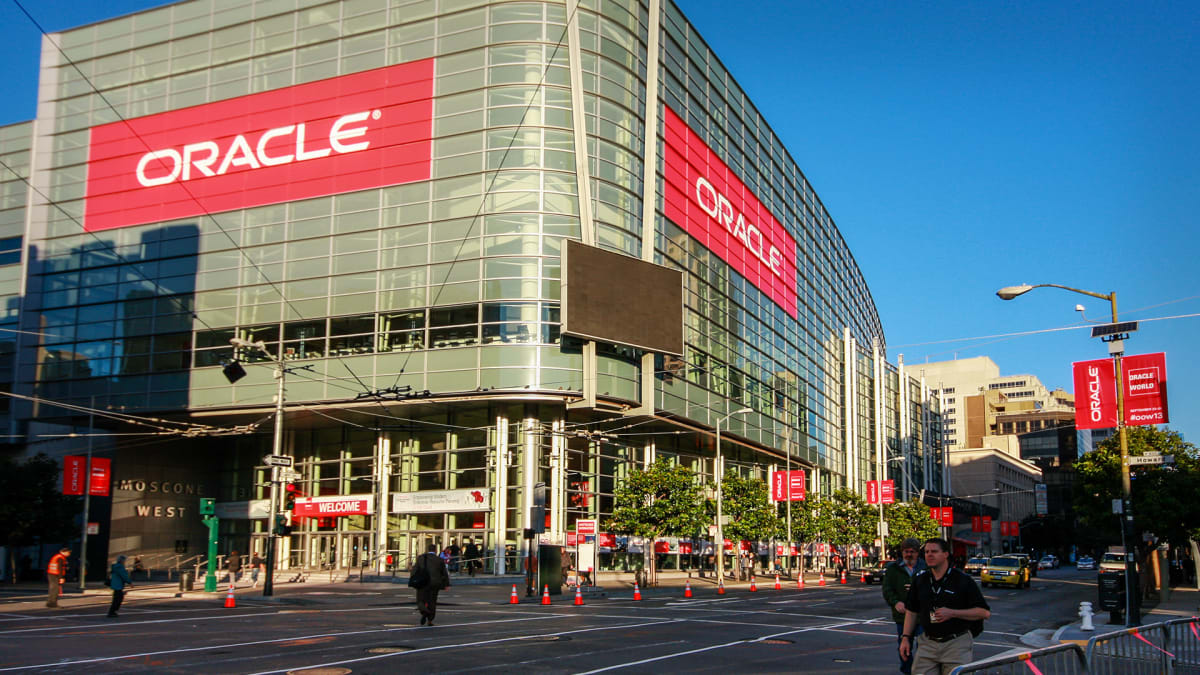
Robert Bierig, a manager of Oakmark Fund and Oakmark Select Fund, sees the current stock-market environment as constructive for value stocks, including the ones in his funds.
The spread between companies with high price-earnings multiples and companies with low ones is bigger than usual, he noted.
That puts value investors in the catbird seat because it means there may be more opportunity than usual in low P-E stocks.
When looking at growth investing versus value investing, Bierig views all intelligent investing as value investing. And growth is an important component of value, he says.
He cites Oracle and five other stocks among his favorites. Here are his comments.
Street.com: What’s your philosophy in choosing stocks?
Bierig: We’re fundamental research-based value investors. We take a private-equity approach to investing in the public markets.
Our philosophy is based on three principles. First, we seek to buy stocks at a discount to our estimate of intrinsic business value. Second, we look for companies that we expect to grow per-share value over the long-term. Third, we want management teams that think and act like owners, so they’ll be good stewards of investment capital.
Street.com: What are two stocks your funds hold that you like a lot?
Bierig: One stock we like today is Oracle (ORCL). Like many names in software, the stock is down this year. It’s about 25% off its December 2021 high.
Oracle is going through two cloud transitions at the same time. This complexity has obscured the underlying progress that the business has been making.
In applications, Oracle’s strategic back-office cloud business is growing annualized revenue 25% to 30% in constant currency. In infrastructure, Oracle’s cloud services and autonomous database are growing even faster.
As these next-generation businesses become a larger percentage of total revenue, Oracle’s overall revenue growth rate is accelerating close to double-digits after many years of flattish results.
The company also has opportunities to drive faster growth and substantially higher margins from its recent acquisition of Cerner.
Finally, Oracle has reduced its share count nearly 50% in the last decade through buybacks. At only around 12 times our estimate of normal earnings excluding cash, we think this is a cheap stock.
Another stock that we like is CBRE (CBRE). The company earns a toll on commercial real estate activity in the U.S. and is the largest player in the industry.
CBRE benefits from an increase in institutional ownership of real estate as well as from an increase in the toll it can charge for its services. It consistently gains share in leasing and capital markets and grows its outsourcing business as it takes over commercial real estate operations for large corporate clients.
However, the stock price is down roughly 30% year to date. Investors are understandably concerned about higher interest rates and an economic slowdown that could lead to a pause in transaction activity.
We have always anticipated a slowdown but expect trough earnings to be higher than feared, due to a shift toward outsourcing and more recurring revenue streams in recent years. We view the stock as attractive at around 11 times our estimate of mid-cycle earnings.

Oakmark Funds
TheStreet.com: What’s your outlook for the stock market as a whole next year?
Bierig: We tend to avoid making predictions about how the stock market might perform in a given year. But I will say that the current mid-teens multiple on the S&P 500 is not extreme in either direction relative to history.
What is unusual today is that the spread between companies with high price-earnings ratios and companies with low ones is wider than is typically the case. That’s a good setup for stock pickers to add value because it means there may be more opportunity than usual in low P-E stocks.
TheStreet.com: Where do you think buying opportunities will be?
Bierig: We’re finding a number of good businesses that are out of favor today, including the two I just mentioned.
In addition, we’re seeing bargains in financials, where we own banks selling at less than half the S&P 500 P-E multiple. Examples include Wells Fargo (WFC) and Capital One Financial (COF).
These banks trade at discounts to tangible book value and have been returning capital to shareholders. We have added to our investments in these longstanding holdings this year.
We’re also identifying opportunities in the energy sector, where we own exploration and production companies selling at double-digit free-cash-flow yields. Examples include EOG Resources (EOG) and ConocoPhillips (COP).
The financials and the energy companies are not necessarily great businesses, but we think they can be excellent investments at current prices.
Street.com: What do you think about growth vs value going forward?
Bierig: I think all intelligent investing is value investing. We’re trying to buy a piece of a business for less than it’s worth. The growth rate is a component of the value, and it’s an important one.
When P-E multiples are compressed, high growth companies tend to be cheap relative to the opportunity set. When P-E multiples are more dispersed, as they are today, we think more traditional value names tend to be attractive.
Street.com: Do you think index funds will continue to gain market share against active funds?
Bierig: I think there’s a place for both index funds and active funds. When selecting an active fund, though, it’s important to make sure you’re not inadvertently investing in a closet indexer. In that case, you’re likely to underperform net of fees.
Instead, I’d suggest looking for active managers who build their portfolios based on conviction rather than benchmark weightings and who hold their stocks for longer than is typical – i.e., at least a few years.
If you can have the discipline to stay calm when times are tough and can find managers who operate with skill, there is opportunity to outperform.







